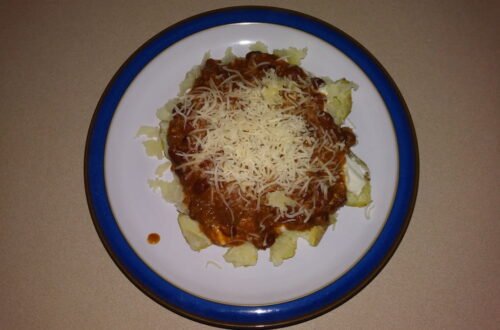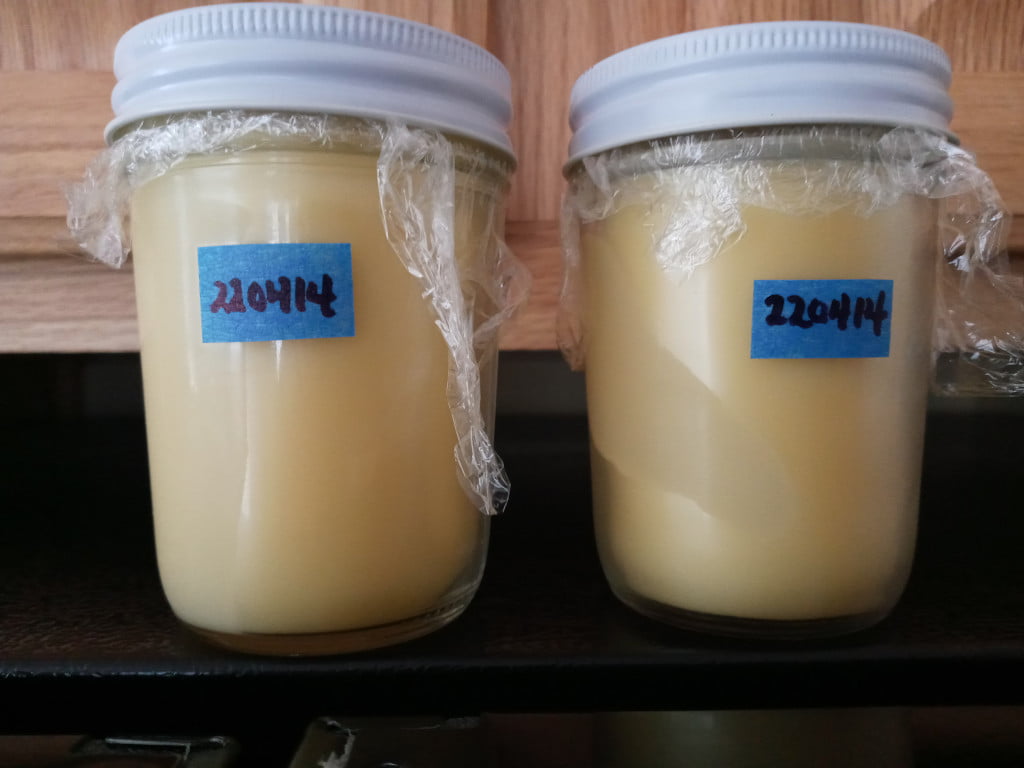
My First Attempt at Making Ghee – SCORE!
Updated on 2022-11-12
I use DMSO topically for pain relief on a number of areas of my body. One possible side effect of using DMSO topically is eczema. Therefore, I apply natural moisturizers on the application areas both after applying DMSO and after bathing.
In the past I’ve used Great Value brand organic virgin unrefined coconut oil from Walmart and I’ve also used Badger Balm for Sensitve Dry Skin. I kept a tin of Badger Balm for Sensitive Dry Skin in my bathroom for use during the warmer months because virgin unrefined coconut oil has a melting point of 76 degrees fahrenheit. While there’s nothing wrong with melted coconut oil, I prefer using something solid because it’s less messy.
However, Badger Balm for Sensitive Dry Skin is quite expensive. The cheapest price I’ve been able to find the product for in the past is $7.99 for a 1-oz tin at Wegmans. That’s quite expensive when I’ve purchased a 14-oz jar of organic virgin unrefined coconut oil in the past at Walmart for $5.18.
About two or three years ago, I began using ghee in place of butter because it has a much longer shelf life and doesn’t require refrigeration. Since ghee is basically an oil, I wondered if it could be used as a skin moisturizer. Therefore, I proceeded to research using ghee as a body moisturizer on the Internet. Sure enough, ghee can be used as a body moisturizer and is supposed to be beneficial for eczema along with other health benefits.
While searching the Internet about using ghee as a body moisturizer, I came upon several posts about making your own ghee. I have been paying $9.99 (excluding sales tax) for a 9-oz jar of Fourth & Heart ghee at Wegmans, which is a bit pricey. If I could make my own, I might be able to save a bit of money.
In March 2022, I searched the Internet on making ghee and I came upon an excellent video on the TwoSleevers YouTube channel by Urvashi Pitre. Urvashi also has a blog by the same name where you can also find the same recipe on making ghee in text format.
I didn’t think making your own ghee was difficult at all after watching Urvashi’s video. I would need containers to store the ghee in and a strainer to filter out any particles from the ghee making process. My wife already had a 1.5-qt stainless steel saucepan that I could use, so I opted not to purchase the pan that Urvashi recommends in her video. I also didn’t want to invest money in a pan if I decided that making ghee wasn’t worth the effort.
On April 03, 2022, I purchased a half dozen 8-oz glass Mason jars on Amazon, a tea strainer from a local Asian grocery store, and a pound (16-oz) of Wegmans brand sweet cream butter from Wegmans.
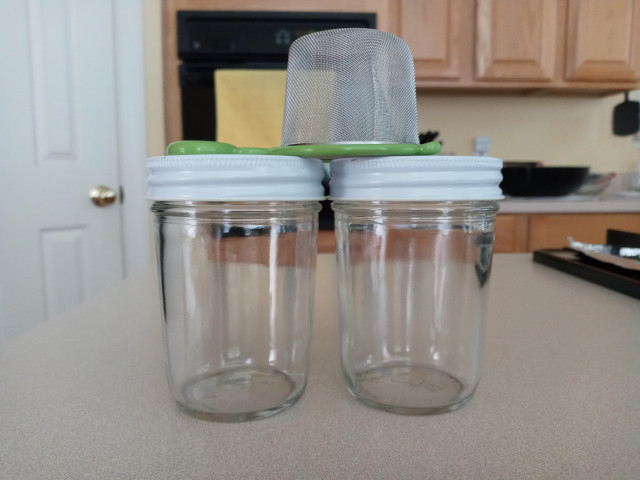 | 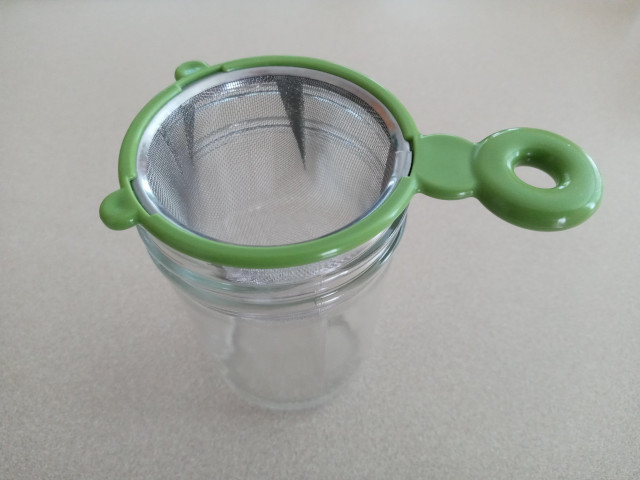 |
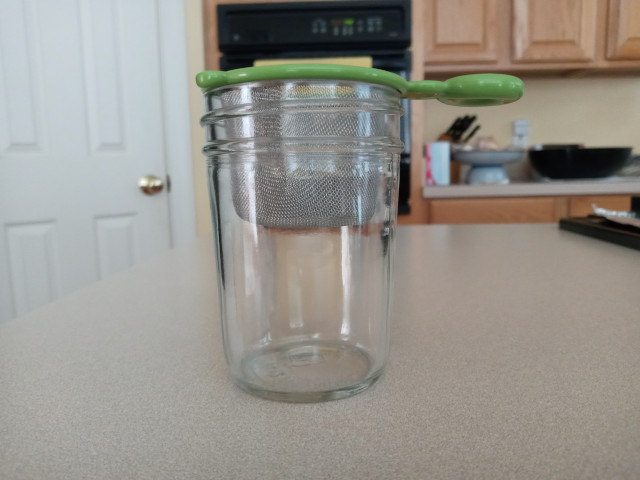 |
The evening of April 14, 2022 I decided to attempt to make my first batch of ghee. I heated up the 1.5-qt stainless steel saucepan for about a minute or two using medium heat on a gas stove. I then commenced to unwrapping each stick of butter and placing them in the saucepan. After the butter melted, I lowered the heat below the low setting where there was barely a flame. The entire cooking process takes about 25-30 minutes and the ghee turned out fantastic.
Initially while the butter was melting during the cooking process, the milk solids floated on the top. The melted butter was also quite cloudy so that I wasn’t able to see the bottom inside of the pan.
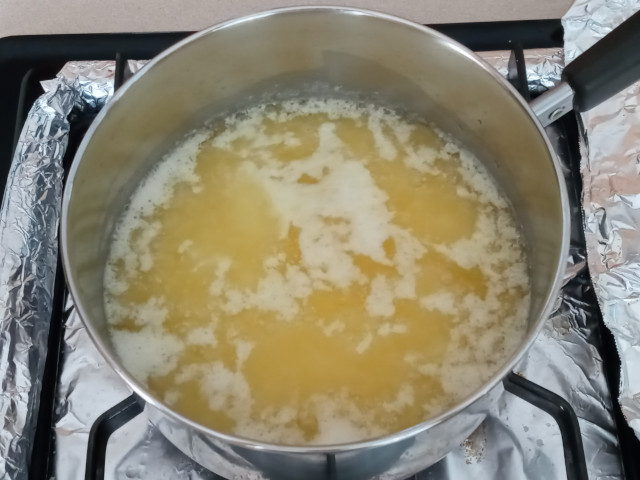
At some point after 20 minutes of cooking the butter, the milk solids fell to the bottom of the pan. This was my cue that the melted butter was almost converted to ghee. The melted butter was clearer at this point, allowing me to see the milk solids at the bottom of the pan. The milk solids were a cream color at first. When the milk solids start turning brown, the ghee is ready. Depending on the flavor you desire, you can stop the cooking process or allow the cooking to continue a bit more. Following is what the milk solids looked like after falling to the bottom of the pan and browning.
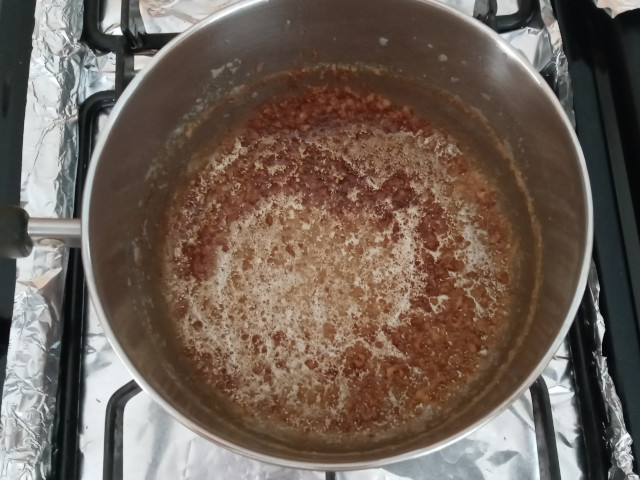
When the ghee was ready, I poured it through a tea strainer into two of the Mason glass canning jars I purchased. I then allowed the ghee to cool for about an hour or two.
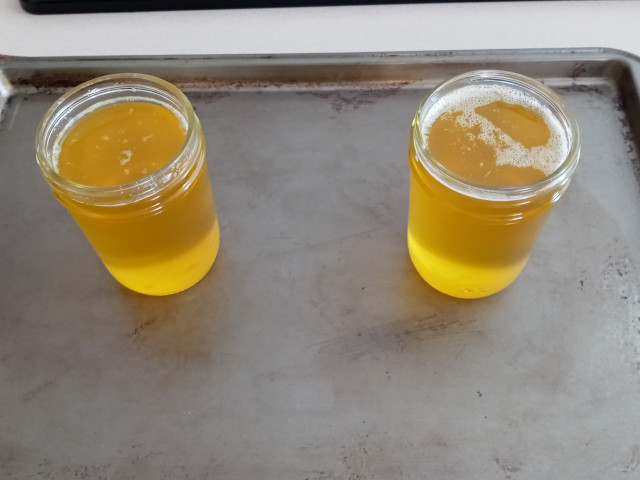
Once the ghee had cooled enough, I covered the tops with plastic wrap to keep the lid interiors clean. After screwing the lids on the jars, I then placed the jars in the refrigerator to enable the ghee to solidify.
Excluding the equipment investment, I only spent $3.39 (excluding sales tax) for regular unsalted sweet butter to make 16-oz of ghee. That’s $0.21 per ounce compared to $1.11 per ounce for Fourth & Heart ghee. Holla!!!
I made a second batch of ghee on May 20, 2022 using Wegmans organic sweet cream butter which cost me $5.49 (excluding sales tax) for 16-oz. That works out to $0.34 per ounce, still a considerable savings over Fourth & Heart ghee.
After using ghee as a body moisturizer for a few months now, I have found that I prefer using it over organic virgin unrefined coconut oil. Organic virgin unrefined coconut oil becomes a bit grainy when kept in the refrigerator and tends to crumble a bit when applying it. Ghee has a smooth consistency, even when stored in the refrigerator.
When the funds become available, I want to purchase a 1.5-qt stainless steel saucepan with two pour spouts so that I don’t have to worry about damaging my wife’s saucepan. The pour spouts will make it easier and less messy to pour the ghee into jars.
There’s a Comment box at the bottom of the page if you have a comment or question.
2022-007




